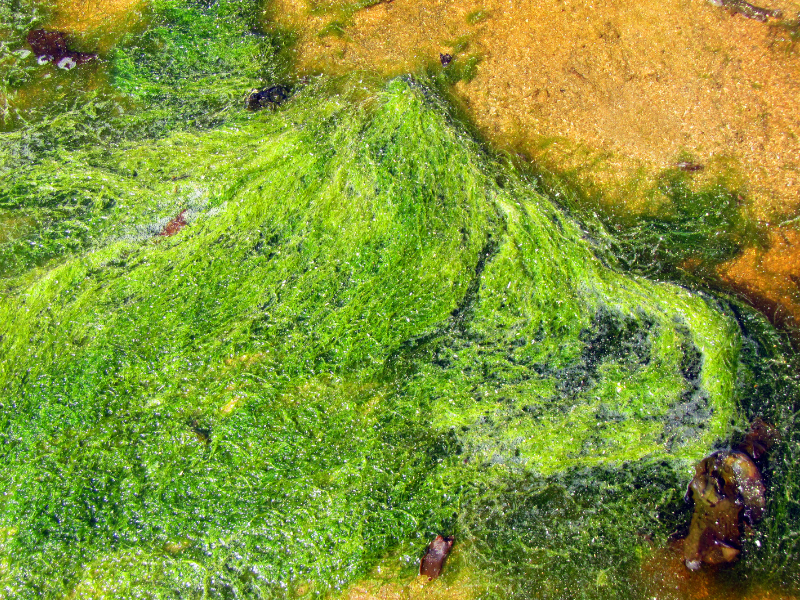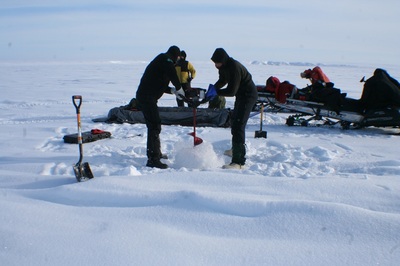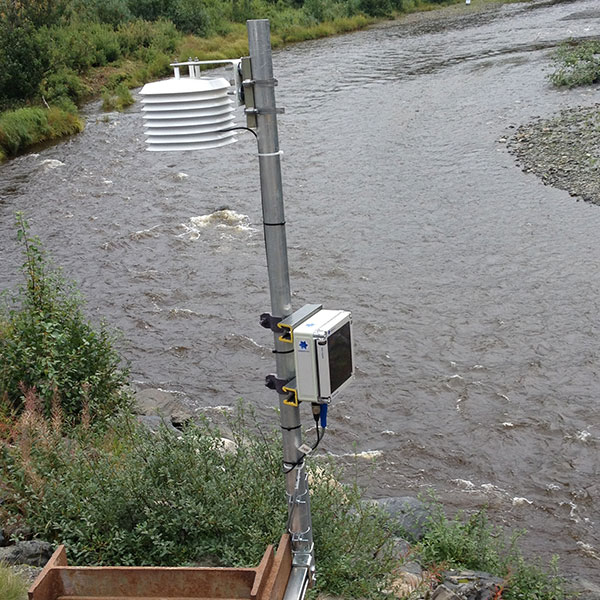In recent years, the warming of lakes has emerged as a critical environmental concern, with far-reaching implications for ecosystems and human communities. Research indicates that lakes across North America are experiencing rising temperatures, driven by factors such as climate change and urbanization. In this blog post, we will delve into the causes and consequences of warming lakes, explore the ecological and socioeconomic impacts, and discuss potential monitoring solutions to address this pressing issue.
Understanding Warming Lakes
Recent studies have documented a steady increase in the temperature of lakes across North America. Building upon this body of research, a recent study published in the journal “Nature Water” sheds light on the rapid warming of high-latitude lakes (>60° N) (Tong et al., 2023). Led by Dr. Iestyn Woolway of Bangor University and collaborators in China, the study utilized satellite data and numerical modeling to analyze lake surface water temperatures of 92,245 lakes. The findings reveal that while lakes globally are warming at a rate of 0.24 degrees Celsius per decade from 1981 to 2020, lakes at high latitudes are experiencing even more pronounced warming trends. This warming trend is primarily attributed to climate change, which leads to higher air temperatures and alters precipitation patterns, affecting lake thermal regimes.

Fisheries and Aquatic Habitats
Warming lakes pose a significant threat to fisheries and aquatic habitats, particularly for cold-water fish species like trout and salmon. According to a study published in the Proceedings of the National Academy of Sciences, concurrent warming and browning of lakes are eliminating cold-water fish habitat in many temperate lakes (Jane et al., 2024). This research highlights the alarming decline in cold-water fish populations across North American lakes, attributing this trend to the combined effects of rising temperatures and increased water browning. Specifically, lacustrine brook trout, a cold-water species crucial to the ecosystem, face habitat reductions due to warmer water temperatures and diminished oxygen levels, placing their survival in jeopardy. These findings underscore the urgent need for adaptive fisheries management strategies to mitigate the adverse impacts of climate change on freshwater ecosystems.
Ecological Implications
The warming of lakes has profound effects on aquatic ecosystems, disrupting the delicate balance of biodiversity and food webs. Algal blooms, fueled by warmer temperatures and nutrient runoff from urban and agricultural areas, have become increasingly common in lakes across North America. Algal blooms are rapid increases in the population of algae in aquatic ecosystems, particularly cyanobacteria, which are microscopic photosynthetic bacteria that can produce toxins harmful to humans and other animals. These blooms not only impair water quality but also deplete oxygen levels, leading to fish kills and harming other aquatic organisms (Paerl et al., 2016).
Additionally, climate change is exacerbating the severity and frequency of algal blooms, with warming water temperatures and changes in rainfall patterns providing favorable conditions for their growth and proliferation. These harmful algal blooms, or HABs, pose significant threats to human health, pets, livestock, and aquatic ecosystems, resulting in wide-ranging economic impacts (EPA, 2024).

In the far North, particularly in the Arctic, harmful algal blooms (HABs) are becoming increasingly prevalent due to rising air and ocean temperatures and reductions in sea ice cover. These environmental changes are creating more favorable conditions for the growth and proliferation of HAB species, such as cyanobacteria and other toxin-producing algae. Recent observations indicate that multiple toxic HAB species are present in Arctic waters, posing significant threats to human health, wildlife, and ecosystem integrity. Additionally, the frequency and geographic extent of HABs in the Arctic have expanded in recent decades, raising concerns about their potential impacts on local communities and ecosystems that have little prior exposure to this phenomenon. (Anderson et. al., 2018)
Socioeconomic Impacts
The ecological changes driven by warming lakes have significant socioeconomic consequences. For example, the proliferation of algal blooms can have detrimental effects on recreational activities such as swimming, boating, and fishing, impacting local tourism economies. Additionally, the degradation of water quality can pose challenges for municipalities relying on lakes for drinking water supply, necessitating costly treatment measures (Dodds et al., 2009).
Subsistence fishing for indigenous populations is being significantly impacted by warming lakes, and other environmental changes. These shifts in the ecosystem dynamics pose profound challenges to traditional hunting and fishing livelihoods, which serve as the cultural and economic lifeblood of communities. In the north, thawing permafrost adds to the complexity for these groups. With decreasing sea ice, shifting freeze-up and break-up patterns, and lower water levels, indigenous peoples are facing obstacles in accessing and harvesting vital fish resources. As climate change continues to alter the Arctic landscape, the socioeconomic integrity of these communities and their subsistence practices is increasingly threatened, highlighting the urgent need for holistic understanding and adaptive management strategies (Search Arctic Science, 2018).

Monitoring Techniques
To effectively monitor and understand the dynamics of warming lakes, researchers and scientists employ a variety of monitoring techniques, ranging from traditional field sampling methods to advanced sensor networks and remote sensing technologies. The Global Lake Temperature Collaboration (GLTC) is a collaborative initiative aimed at compiling and analyzing long-term lake temperature data from around the world. According to the GLTC’s latest report, which analyzed data from over 291 lakes globally, the majority of lakes are experiencing warming trends, with significant variability among regions (Sharma et al., 2015). This comprehensive dataset provides valuable insights into the spatial and temporal dynamics of lake temperature changes and informs climate change adaptation strategies.
Researchers often employ techniques to measure lake temperature profiles at various depths, providing a comprehensive understanding of thermal stratification and mixing patterns within lakes. These profiles offer insights into how temperature changes manifest at different layers of the water column, influencing ecological processes, such as lake turnover and habitat suitability for aquatic organisms. By integrating data from both surface and depth measurements, scientists can better assess the full extent of temperature dynamics in lakes and their implications for ecosystem health and resilience.
Challenges and Limitations
Despite the progress made in lake temperature monitoring, several challenges and limitations persist. Spatial and temporal variability in lake temperatures, data gaps, and infrastructure limitations can hinder our ability to accurately assess and predict future trends. Furthermore, the lack of standardized monitoring protocols and data sharing mechanisms poses challenges for cross-disciplinary research and collaborative efforts. Addressing these challenges will require sustained investment in monitoring infrastructure, data management systems, and interdisciplinary collaborations.
Emerging Trends and Solutions
In response to the challenges of warming lakes, researchers and practitioners are exploring innovative solutions and emerging trends in lake temperature monitoring and management. Remote sensing technologies, such as satellite imagery and unmanned aerial vehicles (UAVs), offer new opportunities for large-scale monitoring of lake temperatures and ecosystem dynamics. Research stations, such as the Teshekpuk Lake Observatory (TLO) project, engage government and scientific communities in monitoring lake temperatures and contribute valuable data for scientific research. These collaborative approaches hold promise for enhancing our understanding of warming lakes and informing adaptive management strategies.

beadedstream’s Approach:
At beadedstream, we are committed to addressing the challenges of warming lakes through our innovative temperature monitoring solutions. Our digital temperature cables, data loggers, and cloud-based software empower researchers and scientists to accurately collect, analyze, and interpret temperature data from lakes and aquatic environments. We have collaborated on various lake monitoring projects, including initiatives like Fresh Eyes on Ice, which connects researchers and Arctic communities using freshwater ice data for climate studies and outreach. Additionally, in Alaska’s North Slope, our real-time monitoring solutions support research on the impact of climate change on Arctic lakes, providing valuable insights into evolving lake dynamics. Moreover, our remote river temperature monitoring systems have been instrumental in helping organizations like Cook Inletkeeper and US Fish and Wildlife monitor stream temperature changes and advocate for the preservation of vital salmon runs in the Cook Inlet watershed. Through these projects and partnerships, beadedstream is dedicated to supporting efforts to monitor and protect North American lakes for future generations.

Conclusion
The warming of lakes presents complex challenges that require coordinated action at local, regional, and global levels. By enhancing our understanding of the causes and consequences of lake warming, investing in monitoring and research efforts, and implementing effective mitigation strategies, we can work together to safeguard the ecological integrity and socioeconomic vitality of global lakes. With continued collaboration and innovation, we can build a sustainable future where lakes remain vibrant ecosystems and cherished resources for all.
For inquiries regarding our digital thermistor strings, data loggers, and real-time data dashboard tailored for lake temperature monitoring, please reach out to us at contact@beadedstream.com. We look forward to assisting you with your temperature monitoring needs.








